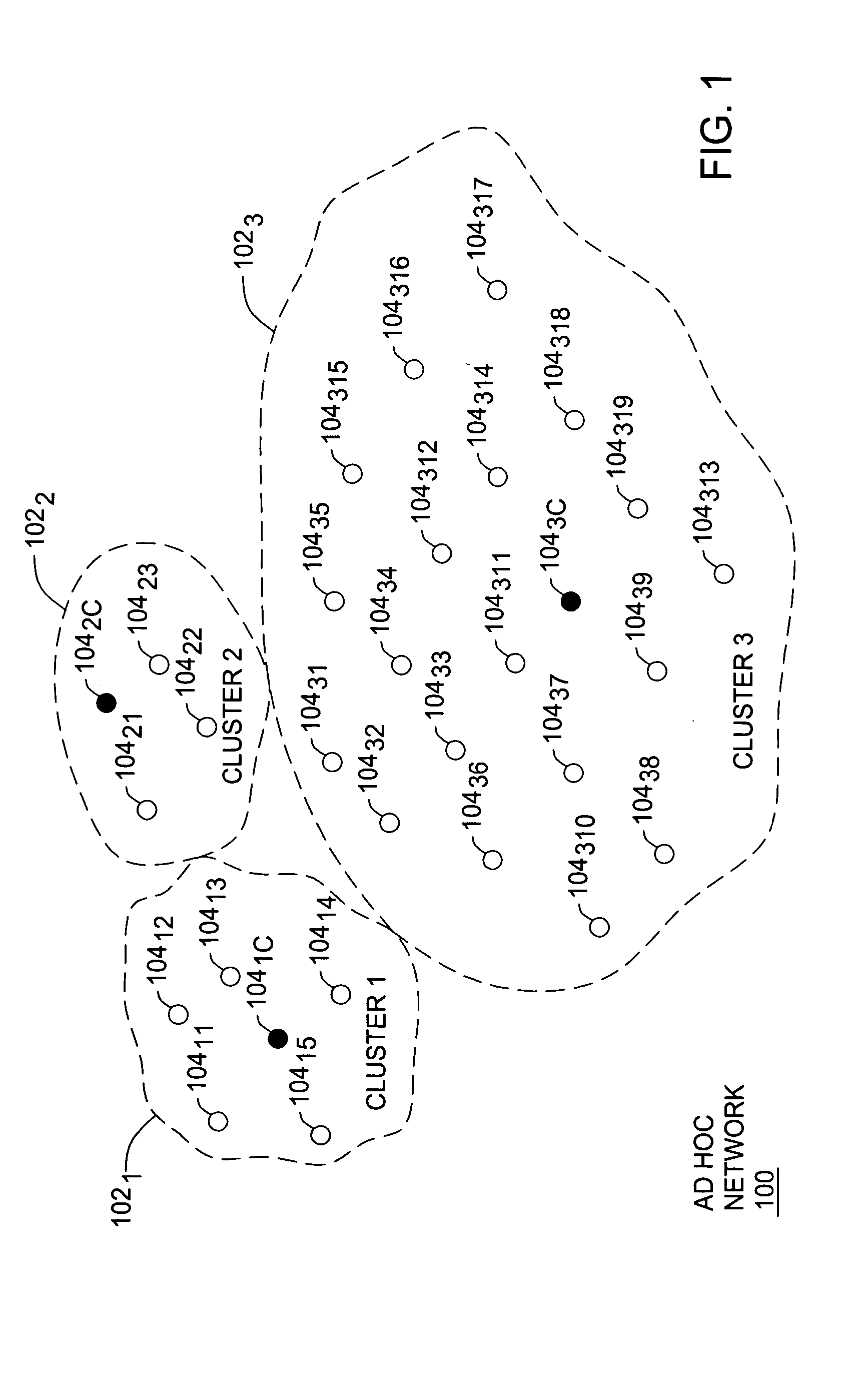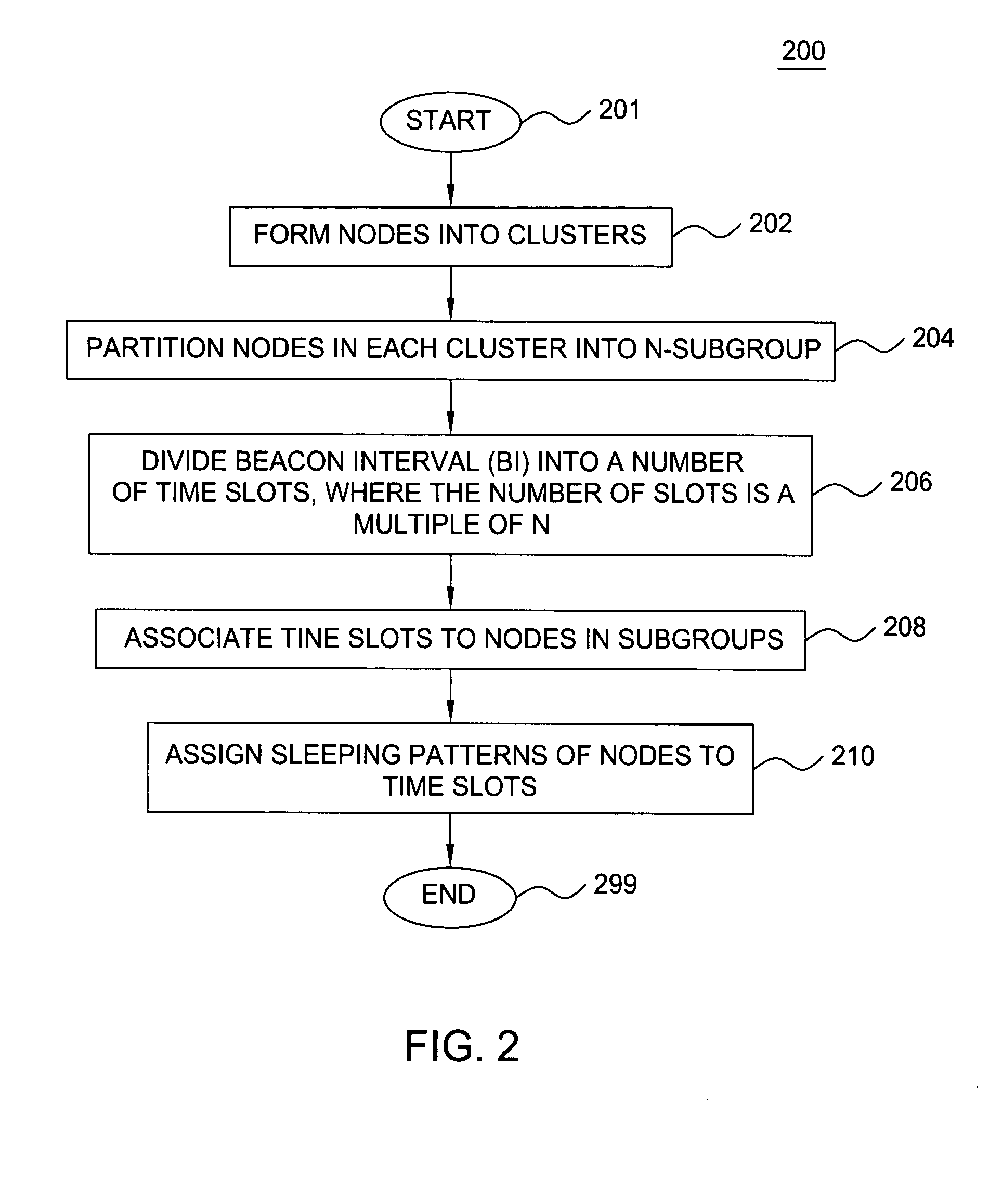Clustering based load adaptive sleeping protocol for ad hoc networks
a clustering and load adaptive technology, applied in the field of network management, can solve the problems of power limitation and inefficiency in saving power, and achieve the effect of increasing the sleeping time of each nod
- Summary
- Abstract
- Description
- Claims
- Application Information
AI Technical Summary
Benefits of technology
Problems solved by technology
Method used
Image
Examples
Embodiment Construction
[0017] The present invention provides a clustering based load adaptive sleeping protocol for ad hoc networks. In particular, the sleeping protocol of the present invention may be used by mobile devices (nodes) to decrease power consumption to thereby extend battery life of the device, while adapting the sleep intervals of a node to the traffic load of such node. The sleeping protocol of the present invention may be implemented in ad hoc networks illustratively operating under the Bluetooth, Infrared Data Association (IrDA), HiperLAN, and 802.11 standards, among other wireless standards.
[0018]FIG. 1 depicts a schematic diagram of a plurality of clusters 102 forming an ad hoc network environment 100 suitable for understanding the present invention. The exemplary ad hoc network 100 comprises at least one cluster 102, where each cluster comprises at least two nodes 104, and where one of the at least two nodes 104 is designated as a cluster-head 104C. For example, in FIG. 1, three clust...
PUM
 Login to View More
Login to View More Abstract
Description
Claims
Application Information
 Login to View More
Login to View More - R&D
- Intellectual Property
- Life Sciences
- Materials
- Tech Scout
- Unparalleled Data Quality
- Higher Quality Content
- 60% Fewer Hallucinations
Browse by: Latest US Patents, China's latest patents, Technical Efficacy Thesaurus, Application Domain, Technology Topic, Popular Technical Reports.
© 2025 PatSnap. All rights reserved.Legal|Privacy policy|Modern Slavery Act Transparency Statement|Sitemap|About US| Contact US: help@patsnap.com



